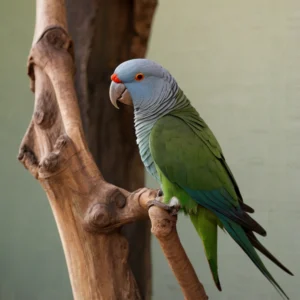Table of Contents
1. Cockatiels Are Naturally Curious
Cockatiels are highly curious birds, always exploring their surroundings. In this post “10 Facts About Cockatiel Behavior you must know” we will understand how They enjoy inspecting new toys, climbing furniture, or nibbling on anything that catches their eye. This behavior stems from their instincts to investigate for safety and resources. Providing safe toys and supervised exploration time can satisfy their curiosity and keep them happy.
2. They Love Social Interaction

Cockatiels thrive on social interaction with their owners and other birds. They enjoy being part of the family and can become lonely if left alone for long periods. Talking, playing, or even whistling with them daily can strengthen your bond and keep them mentally stimulated.
3. Crest Movement Shows Their Mood
A cockatiel’s crest is a powerful mood indicator. When the crest is fully upright, it means they are alert or curious. A slightly relaxed crest signals contentment, while a flat crest against their head often indicates fear or stress. Learning to read their crest movements helps you understand their feelings.
4. Cockatiels Are Talkative Birds

Cockatiels love to vocalize, especially during the mornings and evenings. Their talkative nature includes whistling, chirping, and even mimicking household sounds. Male cockatiels are particularly known for their ability to sing and mimic phrases. Encouraging this behavior can make for delightful interactions.
5. They Use Body Language to Communicate
Cockatiels rely on body language to express their emotions. Fluffing up their feathers may indicate comfort or a need to warm up, while pacing or hissing suggests they feel threatened. Observing their posture and movements can help you respond appropriately to their needs.
Are Cockatiels Good Pets? A Complete Guide
6. Cockatiels Love Routine

Cockatiels are creatures of habit and thrive on predictable routines. They appreciate regular feeding times, play sessions, and consistent lighting for their day-night cycle. A stable routine can reduce stress and make them feel more secure in their environment.
7. Playful and Mischievous Behavior
Cockatiels are playful and sometimes mischievous. They enjoy playing with toys, climbing, and solving puzzles. However, they can also nibble on items like furniture or cables if unsupervised. Providing safe outlets for their playfulness keeps them entertained and out of trouble.
8. Territorial Instincts Are Normal

Cockatiels may show territorial behavior, especially around their cage or favorite perch. This instinct is natural and can be managed by respecting their space and introducing new environments gradually. Understanding this behavior can help maintain a positive relationship.
9. Cockatiels Can Bond Closely with Humans
Cockatiels form strong bonds with their owners and often seek attention through affectionate gestures like head tilts or soft chirps. Over time, they may follow you around, sit on your shoulder, or enjoy gentle head scratches. Building trust takes time but is immensely rewarding.
10. They Mimic Sounds and Whistles

Cockatiels are excellent mimics, capable of learning whistles, simple tunes, and even words. They pick up sounds they hear often, such as phone ringtones or doorbells. Training them with repetition and positive reinforcement can enhance this skill, making them delightful companions. Watch cockatiel mimics sound on YouTube















